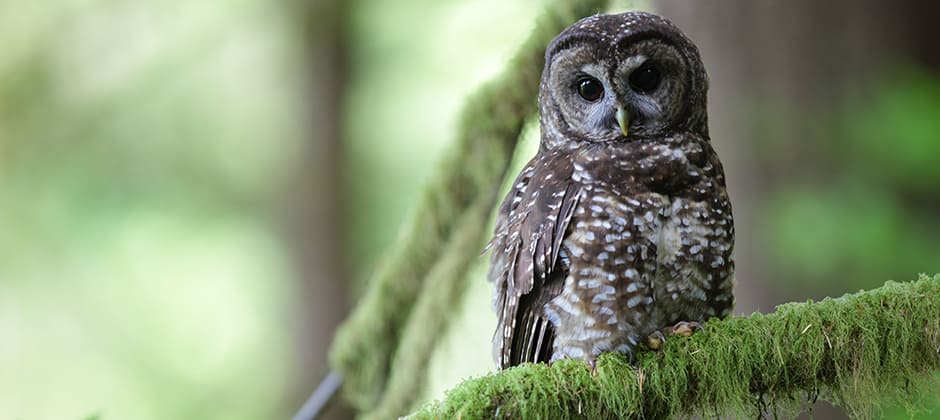Share this article
Removing barred owls aids northern spotted owl recovery
Throughout the Pacific Northwest, federally threatened northern spotted owls have faced growing competition from invasive barred owls, which have moved into their range. By removing the invaders, researchers found, they could stem the native owls’ population declines and help the species recover.
Barred owls (Strix varia) are native to the eastern U.S., but in the 1960s and ‘70s, they began showing up on the West Coast. Over the past 15 years, they’ve contributed to fewer spotted owls (Strix occidentalis), a species originally listed in 1990 as threatened due to extreme habitat loss, said David Wiens, a research wildlife biologist with the U.S. Geological Survey.
Researchers had been collecting demographic information on spotted owls since they started declining in the 1980s. As they monitored falling spotted owl numbers, they were also watching barred owl populations grow. To see how the native owls would respond if they didn’t have invasive owls to contend with, researchers launched a pilot project in 2009 to remove barred owls from certain areas. Two years later, the U.S. Fish and Wildlife Service published a northern spotted owl recovery plan calling for further large scale-experiments.
That recovery plan prompted Wiens and his colleagues to conduct a study published in the Proceedings of the National Academy of Sciences, looking at how spotted owls responded to barred owl removals between 2009 and 2019. They selected five study areas in Washington, Oregon and California, with varying populations of the two species. Each area consisted of a treatment area, where barred owls were removed, and a control area, where they were left alone. Researchers removed a total of about 2,500 barred owls from the landscape, mostly from western Oregon, and surveyed the areas for three to six years.
“We had a very powerful field experiment, which is very rare in wildlife research,” said Wiens, the lead author of the study.
After analyzing the data, he said, “we got very clear results” that removing barred owls aided spotted owls. In control areas, spotted owl numbers continued to fall 12% each year. In treatment areas, spotted owl declines leveled off. The results were consistent across each study area, Wiens said, providing strong evidence that the invasive owls have played a large role in spotted owl declines. While climate change and habitat loss also affect the threatened spotted owl, he said, barred owls represent an immediate threat that is causing rapid declines and may have impacts on the greater ecosystem.
“This is not just about two owl species,” he said.
Header Image: Spotted owls like the one above were positively affected by invasive barred owl removal in the Pacific Northwest. Credit: Chris McCafferty








